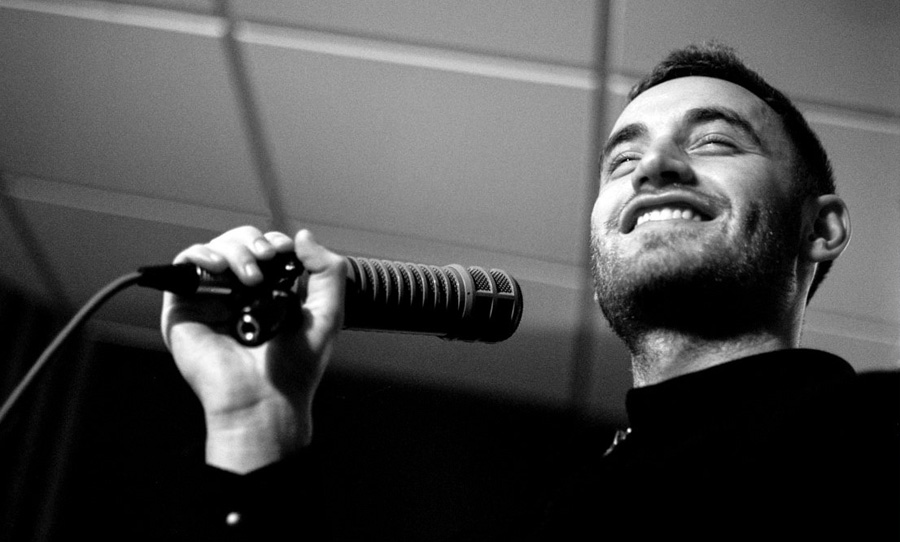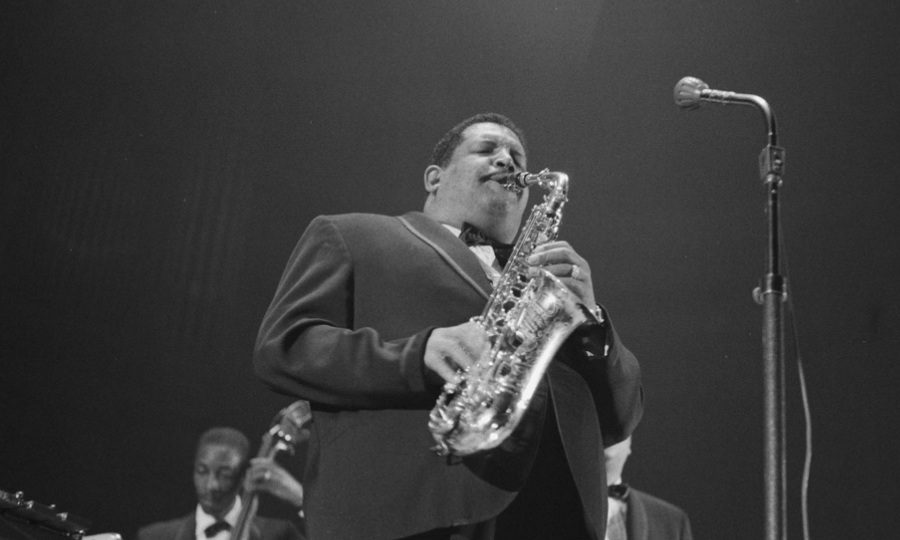Tom Misch is 24 years old, with an official discography that’s fast approaching 100 tracks. His output has been impressive, both for its vastness and its consistency, but his latest work alongside jazz drummer Yussef Dayes has shifted things to an entirely new subspace of cool.
The duo’s collaborative LP What Kinda Music (stamped by none other than Blue Note Records) comes out tomorrow, a seemingly perfect isolation album rippling with Dayes’ smooth-as-butter rhythms and Misch’s unmistakably catchy production. We spoke to the latter to find out all about it.

Alongside Yussef Dayes, Tom Misch has created an album that stands amongst his finest work. Catch up on What Kinda Music with one of the minds behind it.
HAPPY: Kyiv was recorded live on a video set, is that right?
TOM: Yep.
HAPPY: How much of the album was recorded in those kind of improvised situations and how much was a more considered kind of songwriting?
TOM: It’s kind of a big fusion, that’s a big part of the joy of the record, it’s a big fusion. Some tracks might have started out with us improvising and I then would have taken what we did, structured it a bit, and wrote some lyrics to it. But really varies, the record really has a kind of… I guess it has a nod to jazz in the sense that it feels quite free and improvised. Some tracks are just improvisation, like Kyiv. That was just me and Rocco Palladino, he was in the studio and just hit record, we were there jamming and that’s one of the ideas that came out. But other songs, you know, came out in different ways. So it really varies, but improvisation’s a big part of the record for sure.
HAPPY: Is that representative of the way you two work?
TOM: Yeah. I mean before I was a singer or a producer or anything, I was a guitarist, and I’ve always learned to improvise and jam on the guitar. And Yussef, that’s his thing. He’s a really free player. It’s part of our musical blueprint I guess.
HAPPY: Is running a record with somebody else a chance to break a few rules? Things that you would normally call ‘your blueprint?’
TOM: I think that’s what I like about collaborating, it brings about different things. Different things in your sound. I think when you’re collaborating, you’re kind of channelling the other person’s influences a bit and it comes out with something fresh. That’s what I always try to do, if I’m stuck creatively I meet up with someone else who I like the music of and I try to make something with them, because you learn so much as well.
HAPPY: So what kind of strategies or ideas did Yussef open you up to?
TOM: The way he hears music, the way he plays stuff, you know, it was like a true collaboration, there were compromises. And then other places where there weren’t compromises.
HAPPY: In a situation where two people have a lane – say guitar for you and drums for Yussef – how closely do you stick to those roles? Do you trust a drummer to always lay down the right beat, or is everything back and forth?
TOM: It really varies, you know. I’m sure there were times in the studio where Yussef played something and I’d be like ‘nah, that’s not a vibe,’ and I’m sure it happened vice-versa as well, me playing something on guitar and him not feeling it. I primarily produced the record, played bass and guitar – some of the bass was played by Rocco Palladino and a guy called Tom Driessler – Yussef was primarily a drummer but sometimes he’d get involved in other stuff. His energy in the room would kind of bring out a different thing to what I’m doing. But you know, it’s a compromise, so even if I might not dig something that Yussef does, that’s why the record sounds the way it does. It’s always something different, I guess.
HAPPY: Since I’ve got just you on the phone I was going to go with some production questions. What DAW are you using these days?
TOM: I’m using Logic.
HAPPY: Were there any gear or plugin purchases that got a good run on the record?
TOM: Yeah, there was a lot of UAD plugins. This was a big evolution for me, making this record I learned a lot. You know, I’ve never recorded live drums before so that was a big learning curve, there were a lot of weird techniques. I really did hone my skills in that sense. UAD plugins I love, I use a lot of FabFilter stuff, and I used some outboard gear for the first time. I used real Neve preamps and stuff like that, the studio I was using had this Roland [Space Echo]. But the UAD plugins I was using were my favourite.
HAPPY: I didn’t know that you hadn’t recorded live drums on any of your records. It’s all been in the box?
TOM: It’s been in the box, yeah. I guess I’ve kind of thought of myself as a beatmaker and part of that is programming drums in the box, but with this record it was a whole different approach. And there were programmed drums on this record as well, I’ve added some claps and that to what Yussef played.
HAPPY: It sounds like it’s more about getting to the right sound, not how you get there, for you?
TOM: Definitely, yeah. It’s about how it sounds, really. If no one cares about the way someone – people don’t really care about the process in this sort of music, generally it’s the end product and if you can get a good sound with just your laptop… like Kaytranada is literally on FL Studio and a laptop, where a lot of people would frown on that because it’s not a fancy DAW. If it works for him…
HAPPY: That’s refreshing, and I think people are coming around to it more and more. That idea that whatever you choose to master, it’s a valid path.
TOM: Definitely.
HAPPY: Did you do much sampling on this record?
TOM: We did some sampling. There was a track called The Real, that came from a day – actually I was in the studio with Loyle Carner in the morning and I said to Yussef ‘do you want to come through?’ He put some drums on the track with Loyle, and Loyle left, and then we recorded two or three more tracks that day that are now on the album, so that was an insanely productive day. One of the drums that he recorded later that day, I went home and chopped it up and sampled some Aretha Franklin, and that’s a track called The Real, a song on the record. I think that’s the only typical sampling track, then I guess there’s a fusion of the stuff that I used to do more with live drums.
HAPPY: The Real is a shorter track in the middle if I remember right… what were the other two tracks from that session?
TOM: What Kinda Music, the drums were done that day, The Real, and I think Storm Before The Calm.
HAPPY: That’s interesting – first, middle, and last tracks on the record. Framework.
TOM: (Laughs)
HAPPY: I want to talk about Blue Note – I’m a massive fan of Blue Note but apparently not that big of a fan, because I had no idea they did contemporary releases. How has it felt to become part of that story?
TOM: It’s really cool, when we heard it was a possibility we were very excited and trying to weigh up the pros and cons, and we decided to go for it because they have such a legendary history. You know, they might not be the most powerful label these days or they won’t be able to push the record as much as a label with more money, but just to have that stamp of Blue Note… and I think the music will spread via word of mouth, you know? It’s one of those albums people will come back to. It feels amazing to have that stamp.
HAPPY: Is there a definitive Blue Note record or artist for you?
TOM: I love Robert Glasper, his early trio records. I love In My Element, Canvas.
HAPPY: We spoke to Ezra Collective recently and they made this great point that jazz, in its origins, wasn’t a genre that was considered elite, or for anyone in particular. It was for everyone. Do you think it’s made some return to that state of mind in recent years?
TOM: Yeah, good question. I mean it’s kind of evolved so much, I guess it used to be the popular music of that era when it started and then it… I guess modern jazz – and when I say modern jazz I mean popularised jazz like Ezra Collective, they make it quite accessible – it’s more accessible than old-school jazz I guess. It’s a good question, I’m not too sure on that one.
HAPPY: Sure. It’s interesting, jazz at least in Sydney or other Australian cities, aside from a few bands it’s still largely in that elite space where the tickets are a bit more expensive and they’re at certain venues, but in London it feels like it’s happening in cafes with £5 tickets.
TOM: It’s funny, people often talk about this London jazz scene… it’s so weird but I don’t really feel a part of it, or I’m not really aware of it too much. But I often get asked about it. I think from the outside looking in, you’d think there’s a bubbling community in London but I don’t know, from my point of view I’ve never felt a part of that as such.
What Kinda Music is out April 24th via Beyond the Groove/Blue Note Records/Caroline Australia. Grab your copy here.



